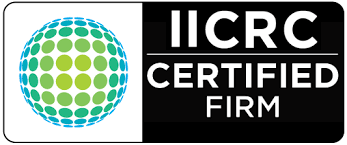Understanding Biohazard Cleanup
Biohazard cleanup involves the removal and decontamination of biological and chemical contaminants that pose health risks. Situations requiring such services include crime scenes, trauma incidents, suicides, homicides, and unattended deaths. These environments often contain bloodborne pathogens, bodily fluids, and other hazardous substances that necessitate meticulous cleaning and disposal protocols.

The Importance of Professional Services
Engaging professional biohazard remediation services is crucial for several reasons:
-
Health and Safety: Exposure to biohazardous materials can lead to serious health issues. Professionals utilize personal protective equipment (PPE) and follow strict guidelines to prevent contamination.
-
Regulatory Compliance: Biohazard cleanup must adhere to regulations set by agencies such as OSHA and the EPA. Certified professionals ensure compliance, mitigating legal liabilities.
-
Discreet and Compassionate Handling: Traumatic events require sensitivity. Experienced technicians approach each situation with compassion, maintaining confidentiality and respect for those affected.
Specialized Services Offered
Biohazard cleanup companies provide a range of specialized services, including:
-
Crime Scene Cleanup: Addressing residues from criminal activities, including blood, tear gas, and fingerprint powder.
-
Trauma Scene Cleanup: Cleaning and decontaminating areas affected by accidents or violent incidents.
-
Unattended Death Cleanup: Managing decomposition and related hazards when a death is undiscovered for an extended period.
-
Suicide and Homicide Cleanup: Sensitive and thorough cleaning to remove all biohazards following tragic events.
-
Blood Cleanup: Specialized handling and disposal of bloodborne pathogens to prevent disease transmission.
The Cleanup Process
The biohazard cleanup process typically involves:
-
Assessment: Evaluating the extent of contamination to determine the necessary scope of work.
-
Containment: Isolating affected areas to prevent cross-contamination.
-
Removal: Safely disposing of biohazardous materials in compliance with regulatory standards.
-
Cleaning and Disinfection: Utilizing industry-approved disinfectants to eliminate pathogens.
-
Restoration: Repairing or replacing materials as needed to return the area to its pre-incident condition.
Choosing the Right Service Provider
When selecting a biohazard cleanup company, consider the following:
-
Certification and Training: Ensure technicians are certified and trained in biohazard remediation.
-
Experience: Look for companies with a proven track record in handling various biohazard situations.
-
Availability: Emergencies can occur at any time; choose a provider offering 24/7 services.
-
Discretion: Respect for privacy is paramount in sensitive situations.
In conclusion, specialized biohazard cleanup services play a vital role in ensuring public health and safety following traumatic events. By employing trained professionals, affected areas are restored efficiently and compassionately, allowing individuals and communities to heal and move forward.

















